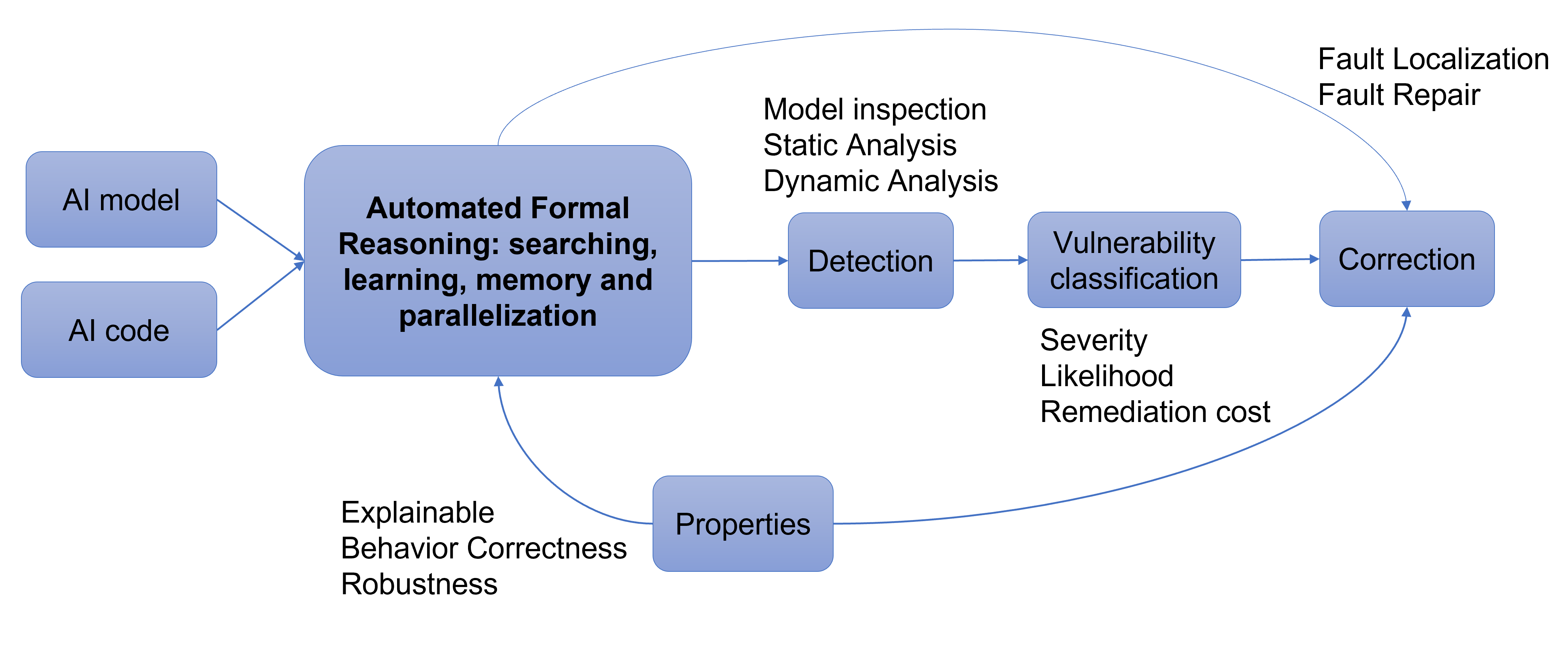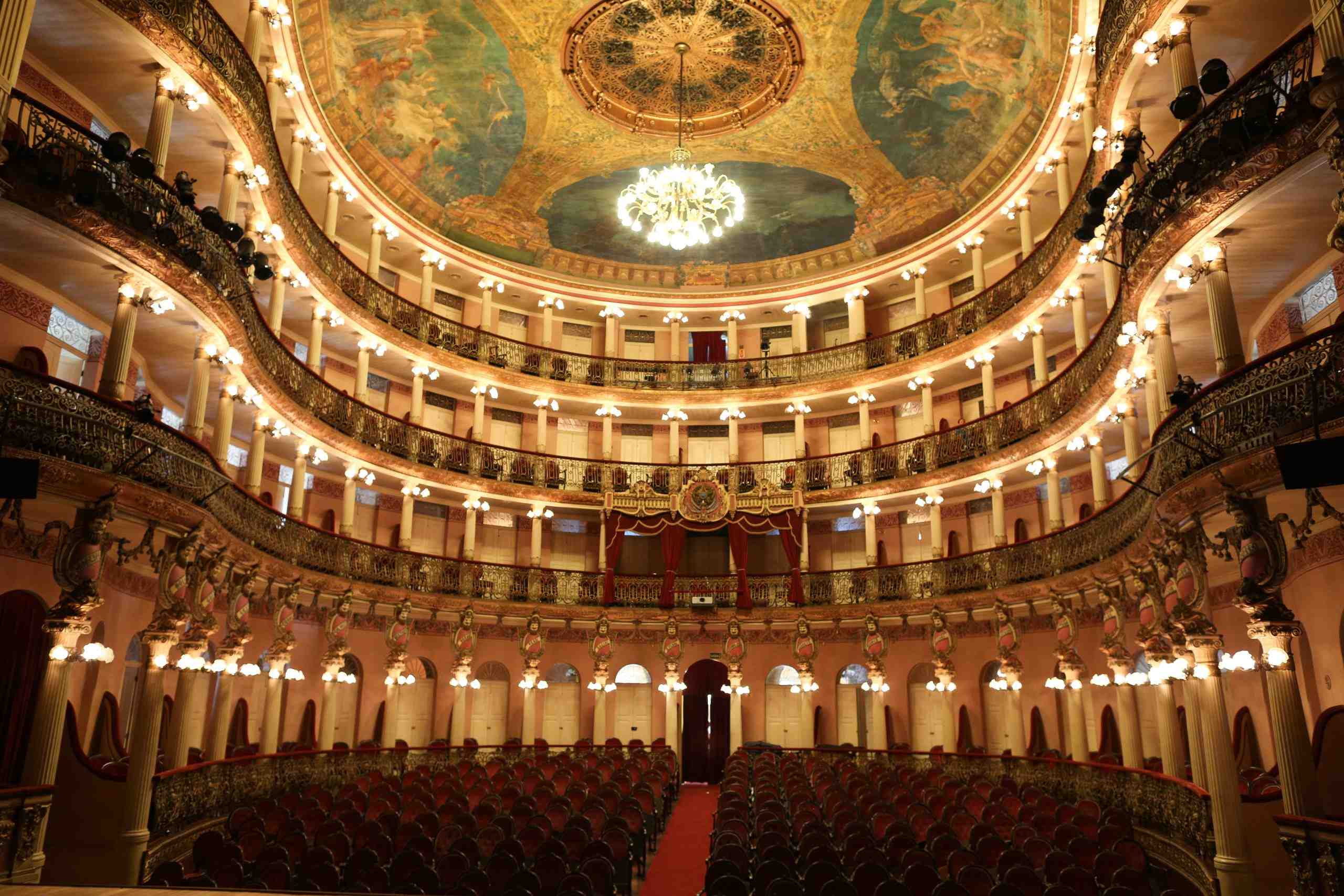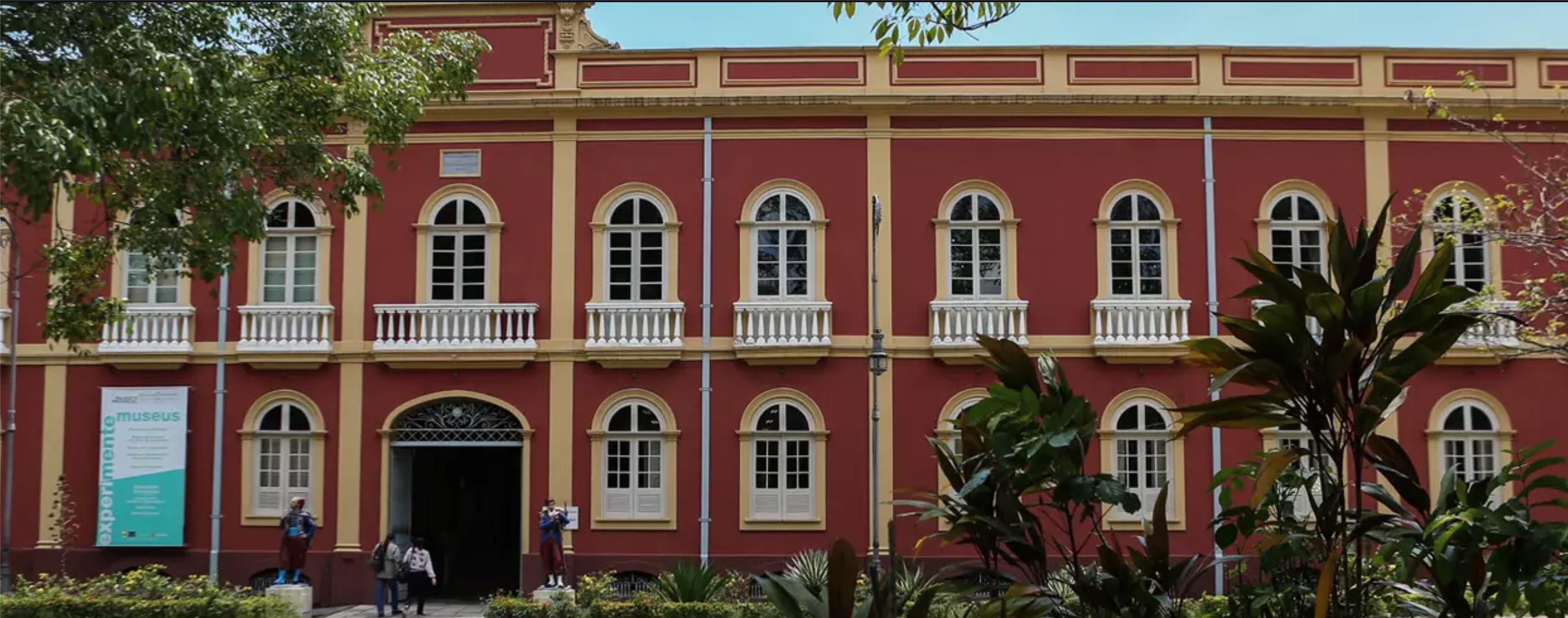About
The AFRiTS one-day Workshop, co-allocated with SBMF 2023 (Brazilian Symposium on Formal Methods), aims to bring together researchers working on challenges at the intersection between artificial intelligence (AI) and cyber-security, including security for AI and AI for security.
We are particularly interested in discussing recent achievements and future initiatives to address the fundamental security problem of guaranteeing safety, transparency, and robustness in neural-based architectures and their implementation in computer-based systems. Regarding safety and robustness, one important observation is that it is becoming more difficult to achieve these properties since fixed mathematical models are being replaced by machine learning (ML) approaches, where the future operation may change based on data acquired during previous actions due to model updating. Indeed, ML algorithms have a dual role in formal software verification development: "model evolution" and "verification enhancement", which we intend to discuss in AFRiTS.
We will have invited talks, poster presentations, an "Automated Formal Reasoning for Trustworthy AI Systems" roundtable discussion on how to make the formal verification process more automatic, whether using SAT, SMT, BMC, AR, and other reasoning technologies, to achieve safety, transparency, and robustness in learning-based systems.
Participants will leave having a better understanding of enabling system designers to specify essential conceptual/behavioral properties of neural-based systems, verify them, and thus safeguard the system against unpredictable behavior and attacks. Therefore, we will foster the dialogue between contemporary explainable neural models and full-stack neural software verification.
Areas of interest

Figure above illustrates the main research areas in automated formal reasoning for trustworthy AI systems we want to cover in this workshop. It covers methods, techniques, algorithms, and tools to detect, classify and repair security vulnerabilities in AI systems. Therefore, the workshop's primary goal is to establish new partnerships/collaborations to discuss the challenges at the intersection between AI and cyber-security: security for AI and AI for security and tackle our main obstacles to achieving widespread adoption of trusted and secure AI systems.
Preliminary Program
| # | 05/12/2023 |
|---|---|
| 9:00-10:00 | Edoardo Manino Title: A Tale of Two Oracles: Defining and Verifying when AI Systems are Safe Slides: click here. |
| 10:00-10:30 | Jefferson Andrade Title: Dynamic Epistemic Logic in Neural Layer Transparency: Towards a Formal Understanding of Knowledge Evolution in Neural Networks Slides: click here. |
| 10:30-11:30 | Sérgio Campos Title: Stochastic Formal Model of PI3K/mTOR Pathway in Alzheimer's Disease for Drug Repurposing: An Evaluation of Rapamycin, LY294002, and NVP-BEZ235 Slides: click here. |
| 11:30-12:00 | Edoardo Manino, Rafael Menezes, Fedor Shmarov and Lucas Cordeiro Title: NeuroCodeBench: a plain C neural network benchmark for software verification Slides: click here. |
| 12:30-14:30 | Lunch |
| 14:30-16:30 | Janislley Oliveira de Sousa Title: Memory Safety in Linux Kernel Drivers: Enhancing Security with
Formal Verification
|
Important Dates
| Paper submission deadline | |
| Acceptance notice | |
| Camera-ready copy deadline | |
| 5th of December | AFRiTS 2023 |
Committees
Organizing Committee:
Organizers
- Lucas Cordeiro (UFAM and The University of Manchester, UK)
- Edjard Mota (UFAM - Universidade Federal do Amazonas, Brazil).
Program Committee
- Artur d'Avila Garcez (City, University of London, UK)
- Ekaterina Komendantskaya (Heriot-Watt University, UK)
- Edjard Mota (Federal University of Amazonas, Brazil)
- Youcheng Sun (The University of Manchester, UK)
- Lucas Cordeiro (UFAM and The University of Manchester, UK)
- Louise Dennis (The University of Manchester, UK)
- Sergio Campos (Federal University of Minas Gerais, Brazil)
Submission instructions
We invite researchers to submit an extended abstract (at most 4 pages) describing the research they intend to present in the workshop. These abstracts will be peer-reviewed and published at https://ceur-ws.org.
Abstracts should present unpublished and original work that has a clear contribution to the state-of-the-art on the theory and practice of formal methods.
Submissions should be made via this link: https://easychair.org/conferences/?conf=afrits2023
Manaus
Manaus, located on the banks of the Negro River in northwestern Brazil, is in the heart of the world's largest rainforest and is one of the biggest tourist destinations in Brazil. It is also the main financial, corporate, industrial, research, technology, entertainment, and commercial center of the Northern Region of Brazil. The city is situated at the confluence of the Negro and
Solimões rivers, with the Teatro Amazonas listed as a National Historic Heritage by IPHAN its greatest cultural symbol.
Manaus was home to the first higher education institution in Brazil, founded on January 17, 1909. This originated from the defunct Free University of Manáos, which dismembered the Faculty of Law, forming the embryo of the current UFAM.
The Institute of Computing of the UFAM, which has only 30 years of history, is one of the two most important centers of higher education and research
and entrepreneurship in computing startups in the North and Northeast of Brazil, being recognised as a postgraduate program of international level according to the most recent ranking by Capes, an agency of the Ministry of Education that promotes research and graduate studies.

Teatro Amazonas
The concert hall seats 701 people, spread between the audience and three floors of boxes. It's impossible not to be mesmerized by the concave ceiling, which features four canvases painted in Paris by the renowned Casa Carpezot. The canvases depict music, dance, tragedy, and opera. In the center hangs a majestic French bronze chandelier. The masks on the columns of the audience, which pay tribute to composers and playwrights, are also noteworthy.
The Teatro Amazonas' boca cloth is another rarity. It was created in 1894 by Brazilian artist Crispim do Amaral and depicts the confluence of the Negro and Solimões rivers.
Nowadays, the theater hosts major events organized by the State Secretariat for Culture and Creative Economy, such as the Amazonas Opera Festival and the Dance and Theater festivals; high-brow performances like those presented by the State's Artistic and Cultural Bodies; and popular shows that benefit local artists of all genres.. More information (in portugues only) can be seen here.

Provincial Palace (Palacete Provincial)
The building was founded in 1874 and served as the headquarters of the Military Police of Amazonas for more than 100 years. On March 24, 2005, it was transformed into a restaurant. However, it was reopened in 2009 as a museum, and the space is now open to the public free of charge. Visitors can come to learn about the collections and art of the museums, and the space also hosts cultural events that attract children, young people, and adults. Heliodoro Balbi Square (formerly Police Square), in front of the building, is an extension of the tour to the site.
The Pinacoteca has paintings, photos, and engravings by local, national, and international artists. The Museum of Numismatics has a collection of over 35,000 pieces and ancient coins. MISAM has DVDs and CDs that can be viewed for free on site. The Tiradentes Museum honors firefighters and state police, and exhibits weapons and uniforms. The Archaeology Exhibition reproduces excavations and artifacts discovered in the region.
Event Location
The IComp, the venue of the 26th SBMF and the AFRiTS, is located on the UFAM Campus, which covers an area of about 600 hectares. The campus is home to a variety of ecosystems, including native and secondary forests, plateaus and floodplains, meadows, and deforested areas with plantations. The campus is located on the east side of Manaus and is surrounded by neighborhoods and avenues.





